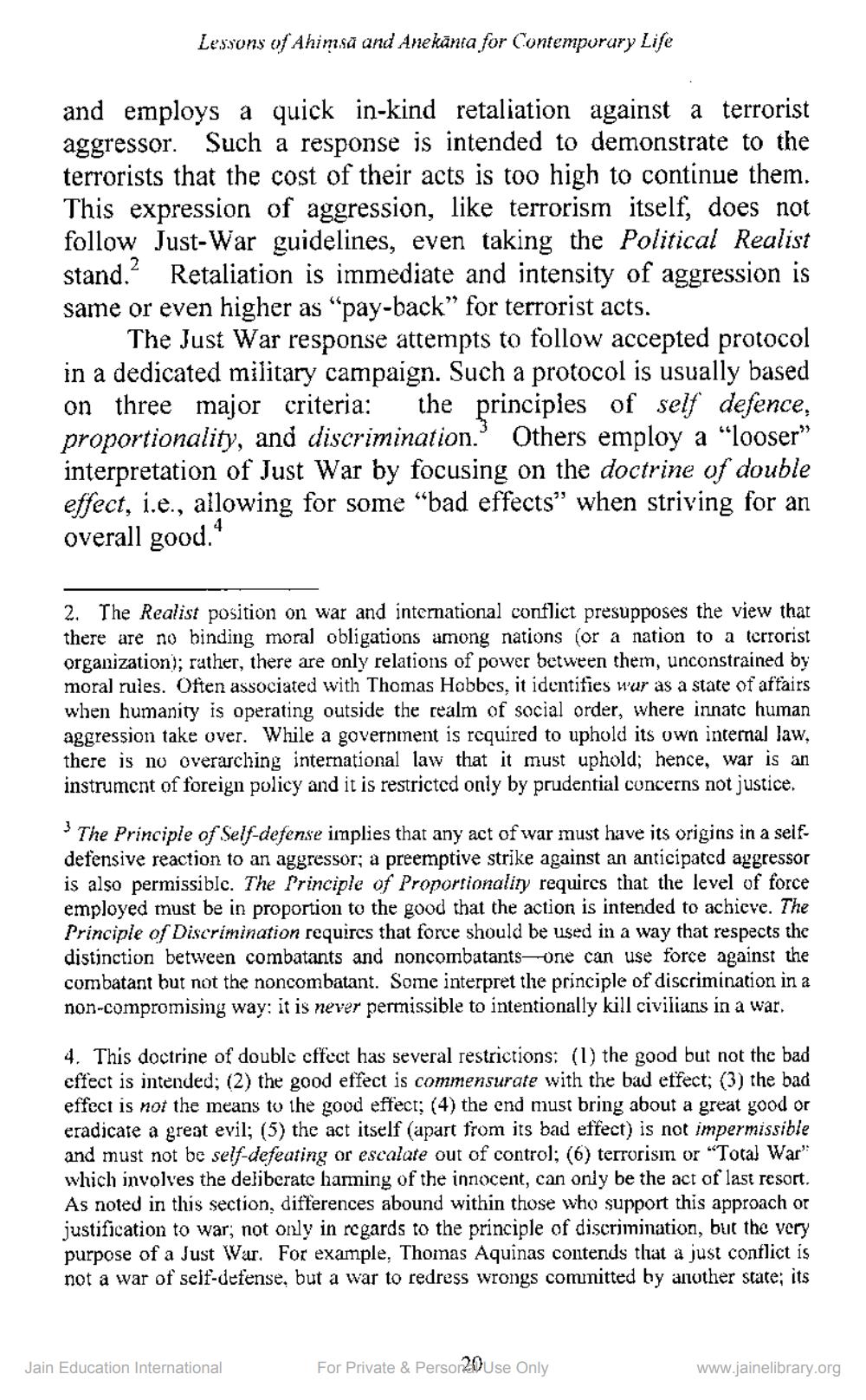Book Title: Jaina Response to Terrorism Author(s): Kim Scoog Publisher: Z_Lessons_of_Ahimsa_and_Anekanta_for_Contemporary_Life_014006.pdf View full book textPage 3
________________ Lessons of Ahimsa and Anekānta for Contemporary Life and employs a quick in-kind retaliation against a terrorist aggressor. Such a response is intended to demonstrate to the terrorists that the cost of their acts is too high to continue them. This expression of aggression, like terrorism itself, does not follow Just-War guidelines, even taking the Political Realist stand. Retaliation is immediate and intensity of aggression is same or even higher as “pay-back” for terrorist acts. The Just War response attempts to follow accepted protocol in a dedicated military campaign. Such a protocol is usually based on three major criteria: the principles of self defence, proportionality, and discrimination.' Others employ a "looser" interpretation of Just War by focusing on the doctrine of double effect, i.e., allowing for some “bad effects” when striving for an overall good. 2. The Realist position on war and international conflict presupposes the view that there are no binding moral obligations among nations (or a nation to a terrorist organization); rather, there are only relations of power between them, unconstrained by moral rules. Often associated with Thomas Hobbes, it identifies wur as a state of affairs when humanity is operating outside the realm of social order, where innate human aggression take over. While a government is required to uphold its own internal law, there is no overarching international law that it must uphold; hence, war is an instrument of foreign policy and it is restricted only by prudential concerns not justice. The Principle of Self-defense implies that any act of war must have its origins in a seif defensive reaction to an aggressor; a preemptive strike against an anticipated aggressor is also permissible. The Principle of Proportionality requires that the level of force employed must be in proportion to the good that the action is intended to achieve. The Principle of Discrimination requires that force should be used in a way that respects the distinction between combatants and noncombatants-one can use force against the combatant but not the noncombatant. Some interpret the principle of discrimination in a non-compromising way: it is never permissible to intentionally kill civilians in a war. 4. This doctrine of double cffect has several restrictions: (1) the good but not the bad cffect is intended; (2) the good effect is commensurate with the bad etfect; (3) the bad effect is not the means to the good effect; (4) the end must bring about a great good or eradicate a great evil; (5) the act itself (apart from its bad effect) is not impermissible and must not be self-defeating or escalate out of control; (6) terrorisın or "Total War' which involves the deliberate harming of the innocent, can only be the act of last resort, As noted in this section, differences abound within those who support this approach or justification to war; not only in regards to the principle of discrimination, but the very purpose of a Just War. For example, Thomas Aquinas contends that a just conflict is not a war of self-defense, but a war to redress wrongs committed by another state; its Jain Education International For Private & Persor 20 Use Only www.jainelibrary.orgPage Navigation
1 2 3 4 5 6 7 8 9 10 11 12 13 14 15 16 17
